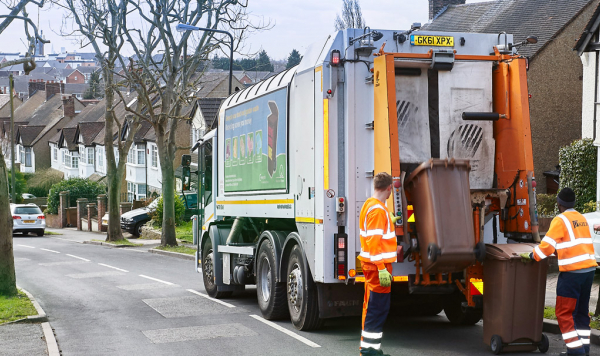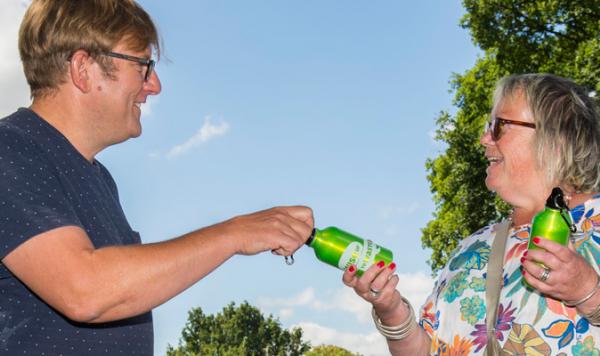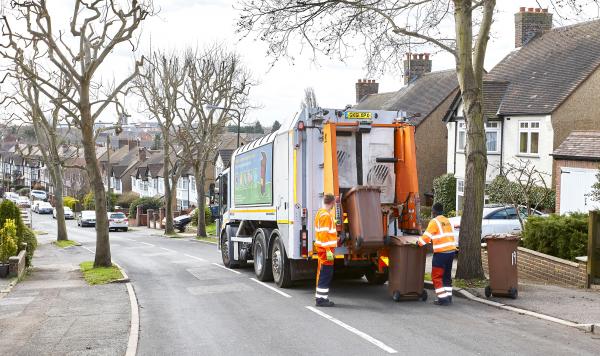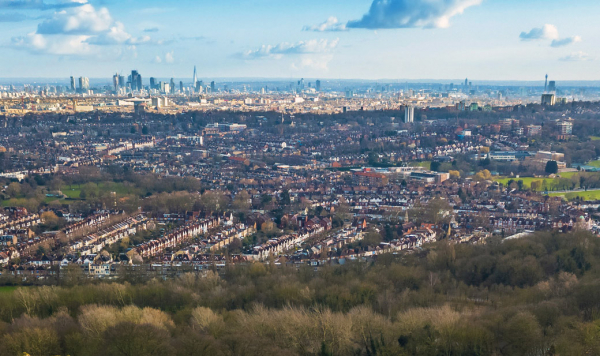Request
I would like to submit the following deputation request, relating to the proposed re-build of the Edmonton EcoPark.
My name is Edward Tranah and I live in xx.
It is just myself forming this deputation, and I will be the sole member to address the Council.
The issues I intend to raise are as follows:
1. We are living in a climate emergency which The Lancet describes as "the greatest global health threat facing the world in the 21st century". The expansion of Edmonton EcoPark's incineration capacity is illogical in this context, given the carbon dioxide which is produced by this method of waste disposal.
2. The Edmonton EcoPark incinerates plastics, compostables and other recyclables. I cannot see that there is a reason which could justify the environmental and potential health impacts of doing so.
3. I know that the NLWA cannot demonstrate that incineration at Edmonton EcoPark does not harm public health, particularly the health of those living closest to the facility.
4. The NLWA has not engaged sufficient numbers of local people with its plans to rebuild Edmonton EcoPark. I believe this is amoral in view of environmental and potential health concerns.
Thank you very much.
I look forward to hearing from you.
Yours sincerely,
Dr Edward Tranah
Response
14 July 2021
1b Berol House, 25 Ashley Road Tottenham Hale N17 9LJ
enquiries@nlwa.com
nlwa.gov.uk
Dr Edward Tranah Via email
Dear Dr Tranah,
Thank you for taking the time to raise your deputation to the North London Waste Authority (NLWA)
meeting on Thursday 24 June 2021.
I appreciate you bringing forward your views in relation to the North London Heat and Power Project
(NLHPP) and setting out the issues you wanted to draw to Members’ attention. The Authority Members
take seriously their responsibility to protect public services, public health, and the environment,
and these matters have been carefully considered in developing the NLHPP.
As promised in the meeting, I would like to take this opportunity to respond in writing and assure
you that all aspects of the NLHPP are thoroughly considered by the Authority and have been tested
and approved through an independent public inquiry process. This letter provides more detailed
information on the project in relation to the topics you have raised.
In your deputation you suggested that the replacement Energy Recovery Facility will be responsible
for around 700,000 tonnes of CO2 every year.
NLWA shares your concern about carbon emissions, and it is for this reason that we are investing in
a world-class Energy Recovery Facility which will minimise the carbon impact of our residents’
waste.
Our residents’ waste contains carbon and we have a statutory duty to manage its disposal. The
Authority has chosen, after careful consideration of the options, to do so in way that best
protects the environment and contributes to tackling the Climate Emergency.
In your deputation you suggested that our new facility will be responsible for 700,000 tonnes of
CO2 every year. However, this is misleading in understanding the carbon impact of north London’s
waste. Following a Carbon Impact Screening of the Project, it is predicted that the net carbon
impact of the ERF will be around 28,000 tonnes of CO2e each year. This calculation has been
developed using the standards set by the Intergovernmental Panel on Climate Change (IPCC)
(Guidelines for National Greenhouse Gas Inventories – 2006) and DEFRA (Energy Recovery for Residual
Waste - A carbon- based modelling approach – February 2014).
The net carbon impact of the ERF is so low because it will provide low carbon power for the
country’s national grid, extract metals for recycling, and generate heating for thousands of local
homes and businesses.
The NLHPP aligns with the Climate Change Committee’s (CCC) route map for Net Zero. The CCC has
called for all landfilling of biodegradable waste to end by the mid-2020s. The Mayor of London has
a similar target. Building the NLHPP will ensure that none of north London’s waste ends up rotting
in landfill.
Our Energy Recovery Facility (ERF) will be more carbon efficient than the majority of UK
facilities. This is a result of the Authority’s decision to build a facility capable of generating
combined heat and power. Crucially, our facility will provide heating and hot water to thousands of
local homes in Edmonton, as well as electricity. Last year the All Party Parliamentary Sustainable
Resource Group concluded that, within overall sustainable approaches, the best way of dealing with
residual waste is through energy from waste plants which maximise heat and power benefits. Our ERF
is an exemplar of this approach. The report is available online here.
We are proud to be building a facility which is expected to meet and exceed the Mayor of London’s
Carbon Intensity Floor, which is designed to ensure that energy from waste facilities are more
carbon efficient than the energy sources they replace – namely gas power stations.
As a result of the Authority’s careful planning and application of the very best technology, our
ERF will save up to 215,000 tonnes of CO2e every year compared to landfill.
In your deputation you criticised NLWA for burning plastic and recyclable waste at the Edmonton
EcoPark. You said that residual waste cannot be accurately called ‘non-recyclable’.
NLWA welcomes your enthusiasm for recycling and I would like to be clear that no separately
collected recycling is sent directly to our energy recovery facility. The material is sent to
specialist Materials Recovery Facility in Edmonton where it is carefully sorted so it can be
repurposed into new items.
Some recycling is too contaminated to recycle and needs to be treated via energy recovery. As a
public waste authority, NLWA does its upmost to combat this issue and encourage residents to
recycle correctly. Ours is the most extensive programme of activity of any London waste authority,
and includes high impact campaigns like ‘#BinYourNappy’ which is helping to save whole lorry loads
of recycling from being discarded.
Residual waste may contain materials which could have been recycled. However, it is not viable or
safe to rummage through bin bags to pick out materials. In any event, this material is often
heavily contaminated and unsuitable for recycling. Instead we focus on separate recycling
collections at the kerbside. This in in line with UK Government policies.
With regard to plastic, we work hard locally and nationally to reduce the amount of waste people
throw in their residual waste bin. We have launched Low Plastic Zones across north London,
including in Leytonstone, to help businesses and shops cut down on single use plastics. And we
accept the widest possible range of materials for recycling – including pots, tubs and trays –
which are not recyclable in some parts of the country.
We are proud that our initiatives to encourage residents to recycle more is helping to shape the
process for reuse and recycling of plastics not only in north London, but across the rest of the
UK. The volume of plastic recycling we collect has enabled our recycling partner Biffa to invest in
world- leading recycling technology, which the rest of the country is now benefitting from. We have
ensured that 100% of the plastic, steel and aluminium which is recycled in north London gets
processed in the UK, supporting UK jobs. Biffa’s new County Durham plant uses the world’s most
advanced technology to recycle the equivalent of 1.3bn plastic bottles a year.
We are trialling at a new facility in Wembley an innovative picking line to extract even more
material from waste, which would otherwise be sent to landfill. We are also investing in
facilities to extract plastic from other types of waste, such as bulky waste. Our Resource Recovery
Facility will have capacity to manage 135,000 tonnes of recyclable materials every year collected
by boroughs – we expect this will include thousands of tonnes of plastics.
This local focus is twinned with our leading action to call on Government to speed up reforms
that will making recycling compulsory and enable more plastic to be recycled, such as a deposit
return scheme f or bottles. We also want government to make producers responsible for their
packaging through a “polluter pays” policy called Extended Producer Responsibility. We would
welcome your support in calling for greater action from Government.
In your deputation you asked NLWA to confirm that the emission of particulates from the ERF will
not have an impact on public health.
NLWA’s first priority is to protect the health of our residents. That is why we are investing in
the most effective emission control technology available, to make our facility the safest and
cleanest in the UK.
There is a common misconception that modern energy from waste facilities make significant
contributions to pollution and have a major impact on public health. But there is no evidence to
support this.
On the contrary, there is a clear scientific consensus that modern facilities like ours make an
exceedingly small impact on pollution, and do not present a significant risk to public health. This
is the unambiguous position of Public Health England, supported by a significant body of scientific
evidence. This includes research from Imperial College London which studied our facility, and is
clear that modern facilities cannot be linked to negative infant birth outcomes and infant
mortality.
Our ERF will make an extremely small contribution to local concentrations of particulates, and
volumes of pollutants across London. The emissions control technology fitted to the plant will be
so eff icient that, for the majority of the year, local concentrations of particulates (and NOx)
are expected to be effectively zero, and only 2% of air quality limits for a f ew hours a year. This is vastly
outweighed by other sources including road traffic and domestic wood burning. In Enfield, road
transport is responsible for around 40% of NOx and 30% of particulates. Across London, road
transport causes 60% of nitrogen oxides and 25% of particulates. These figures are from the GLA’s
London Atmospheric Emissions Inventory.
The Authority is aware of claims that the ERF will not be able to filter ultrafine particles. This
is contradicted by independent, peer-reviewed academic research which demonstrates that, on the
contrary, the ERF will use technology that is extremely effective in filtering ultrafine particles.
This technology, known as ‘baghouse filters’, has been identified by the UK’s Air Quality Expert
Group as being particularly effective.
The new ERF in Edmonton will, like the existing plant, use the world’s most advanced technology to
control particulates.
The efficient filters are able to remove particles that are much smaller than the pore size of
the fabric. This means that very small particles, known as ‘ultrafine particles’ are captured
alongside larger particles (ultrafine particles are less than 100 nanometres. A nanometre is one
thousand-millionth of a metre). The particles are removed by four highly efficient, separate
mechanisms: impaction; interception; diffusion and electrostatic collection.
The emissions from the ERF that are released into the atmosphere are done so at height, which
allows them to dilute and disperse in the atmosphere. This is in contrast to other sources,
including road transport and domestic wood burning, which emit at ground level where people are
exposed.
In your deputation you said that the NLHPP is being built without the consent of local people.
The NLHPP was brought forward after full public consultation and an Examination in Public. An
extensive two-stage consultation was carried out for the Project between 2014 – 2015, in line with
the stringent requirements set for the Development Consent Order (DCO) application .
This included 15 public events, several meetings with community and statutory stakeholders, a series of
newsletter to 28,000 properties, adverts in the north London press, leaflets in every council
building and 80 libraries across north London, as well as a dedicated project website, email and
phoneline.
If the consultation activities did not meet the high standard required for DCO application, then it
would have been rejected and not even progressed to its Public Examination phase in the planning
process.
NLWA continues its wide-reaching engagement on the Project. This includes regular Community Liaison
Group meetings, newsletters, Twitter and website updates and community roadshows.
If you have any further questions about the Project or require any clarifications, I would be happy
to answer them. You may also find useful the extensive Frequently Asked Questions on our project
website, which cover the themes you raised in your deputation. I would like to thank you again for
your interest in the NLHPP and for submitting your deputation last month.
Yours sincerely,
Cllr Clyde Loakes
Chair, North London Waste Authority




